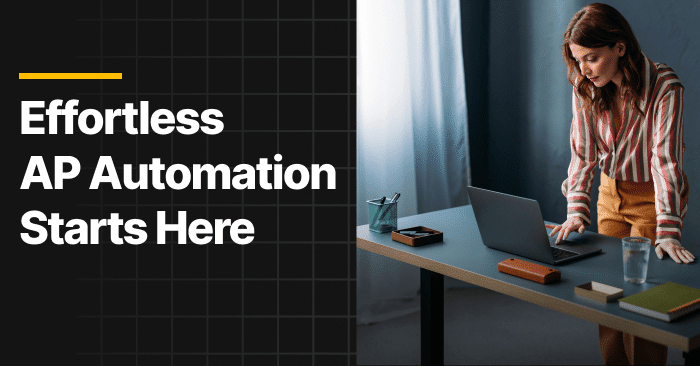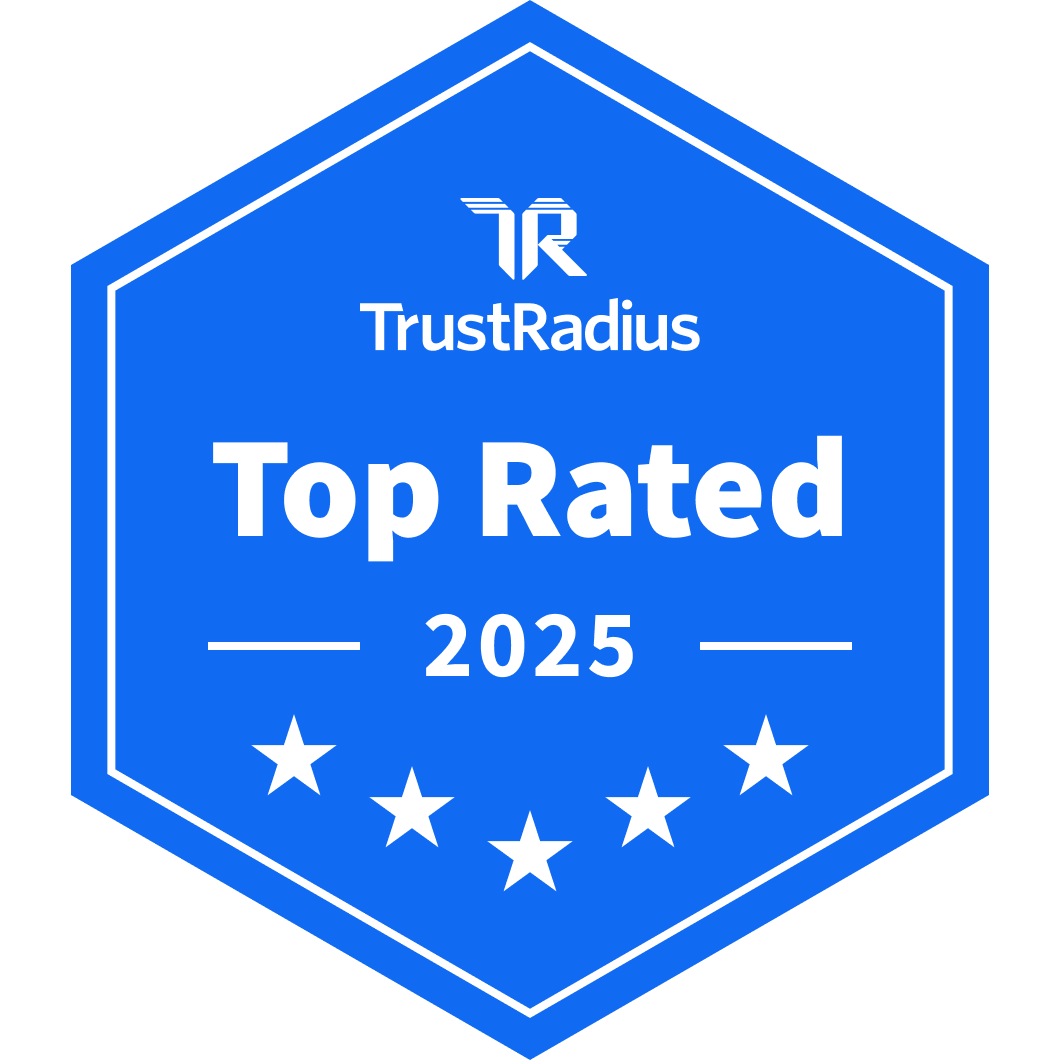
Save time and empower your finance team with Tipalti. The most complete AP solution loved by 5,000+ businesses.
Software-as-a-Service (SaaS) businesses need unique solutions in a business model that includes multi-tenant cloud deployment, online and mobile app access, revenue recognition, recurring billing for usage and the number of users, and automated payables, invoice processing, and supplier payments.
Looking for accounting software for growing your SaaS business? Review our in-depth guide on the best accounting software for SaaS companies.
Accounting Pain Points for SaaS Companies
Accounting pain points for SaaS companies are:
- Revenue recognition
- Lacking real-time visibility of KPI metrics, expenses, and spending
- Inability to timely pay supplier invoices
- Global regulatory and tax compliance
- Taking too long to close the books
- Not enough time for strategic finance initiatives to improve business results
Revenue recognition
Revenue recognition is an issue for SaaS companies. SaaS subscriptions may be billed as annual payments from customers rather than as recurring monthly payments. GAAP accounting standards require that revenue be spread and recognized over the monthly periods in which the software is used and should initially be reflected as deferred revenue when annual subscription payments are received. Companies following IFRS accounting standards must meet those rules for revenue recognition.
With SaaS recurring software subscriptions, your company needs to record deferred revenue, earned revenue, and accounts receivable. Continuously adjust for (recurring) monthly or annual billings based on services consumed by the user (as the performance obligation) during each time period, upgraded plans, canceled subscriptions from customer churn, and other events. Are there other contractual elements, such as implementation services, that are separately recognized?
Using a Google Sheets or Excel spreadsheet for accounting would be too painful for SaaS companies to manage. These spreadsheets are unreliable because preparers can generate many types of errors when implementing complex SaaS considerations. If you have a SaaS business that’s beyond startup, using spreadsheets is too risky and inefficient for accounting.
Perhaps your business needs fully featured SaaS company automation software that handles recurring billing for usage, hybrid, or other complex billing models in the quote-to-cash cycle.
Lacking real-time visibility of KPI metrics, expenses, and spending
SaaS companies need an integrated, real-time system with visibility into valuable KPI metrics, including monthly recurring revenue (MRR), customer acquisition cost (CAC), churn rate, and customer lifetime value (LTV). These SaaS software businesses must also properly control business spend to enhance their path to profitability and positive cash flow.
Inability to timely pay supplier invoices
Timely supplier invoice payments mean better supplier relationships and fewer interruptions concerning inquiries about their payment timing. When your SaaS business can accomplish timely invoice processing, it has the opportunity to take early payment discounts, which increases profitability and lowers cash expenditures.
Global regulatory and tax compliance
When your SaaS business has global suppliers, you need to perform global regulatory compliance before making payments. You also need to achieve tax compliance. The tax compliance process includes collecting W-9 or W-8 IRS forms from suppliers with accurate TIN numbers, tracking calendar-year supplier payments, and filing (and distributing to recipients) 1099-MISC and 1099-NEC returns by specified IRS annual deadlines.
When dealing with global suppliers, your business may also have VAT compliance responsibilities in addition to any required U.S. sales tax payments.
Taking too long to close the books
Your SaaS accounting system or ERP should use current technology, including end-to-end automation of business processes, OCR, digitization, AI/ML (artificial intelligence/machine learning), RPA (robotic process automation of routine tasks), and preferably cloud deployment. To increase efficiency and close your accounting system’s functional gaps, integrate third-party add-on software for automation or other specialized functionality.
Not enough time for strategic finance initiatives to improve business results
Without the best accounting systems, your SaaS company will get bogged down in the day-to-day. Your planned contributions to the company will be diminished if you don’t have time to apply your finance skills to business improvement. You’ll also be judged on and limited by your computer system’s capabilities, accuracy, and efficiency.
Remedies for SaaS Accounting Pain Points
As we mentioned in the prior section, key accounting issues for SaaS companies are paying supplier invoices on time and earning early payment discounts, proper GAAP revenue recognition (see ASC 606), invoicing customers for your recurring revenue monthly or annually, and having visibility of SaaS business success measures. If your accounting solution can’t help you achieve these goals, your SaaS company is experiencing pain points.
Your company needs accounting and bookkeeping software with third-party integrations that can efficiently achieve SaaS billing, SaaS metrics, and reporting and handle other aspects of business accounting. These other integrated software applications include AP Automation or Mass Payments to process, approve, and pay worldwide supplier or partner invoices. Using these types of financial automation software will lessen pain points for your CFO and Controller’s team, improve cash flow in your business, and help you close the books sooner. Scalable Tipalti software will help your SaaS company eliminate time-consuming, paper-based manual processes, automate invoice processing and global payment reconciliations, increase efficiency, add controls, and reduce hiring needs to save money.
Top Features in Accounting Software for SaaS
Top features in accounting software for SaaS are:
- Automation to enhance efficiency and reduce costs
- Revenue recognition in accordance with GAAP accounting standards
- Recurring subscription billing and accounts receivable
- Automated supplier invoice processing and global payments with regulatory compliance
- Reduction of errors and fraud risks
- SaaS real-time dashboards with metrics for
- MRR (monthly recurring revenue) – also called revenue churn
- CAC (customer acquisition cost)
- CLV (customer lifetime value)
- Customer churn
- Other relevant SaaS metrics and KPIs
Your SaaS business needs accounting software that can efficiently automate accounting business processes and analyze industry-related financial data to help you reach your business goals.
Best Accounting Software Solutions for SaaS
SaaS businesses must find the best accounting software to handle their needs beyond financial reporting. The following SaaS accounting software meets those requirements.
Accounting software or ERP systems are part of the solution, but they need a boost from integrated, add-on AP automation, mass payments software, and SaaS billing and metrics reporting software. The best advanced cloud-based accounts payable automation software solution is provided by an established third party, Tipalti, with its 98% customer retention rate and 98% customer satisfaction, with top-rated customer support.
1. Tipalti
Tipalti works with a wide choice of ERP systems and accounting software. As a cloud-first software solution with scalability, Tipalti helps SaaS companies and businesses in other industries achieve their present goals and future-focused strategies.
Tipalti provides add-on AP Automation, Mass Payments, advanced FX products called Multi-FX and FX Hedging for payables, Expenses for employee expense management and reimbursement, and Procurement software that’s integrated with your company’s accounting software or ERP system.
Tipalti AP automation software speeds up accounts payable processes by 80% and closing the books by 25%. Your business will eliminate time-consuming paper documents and manual data entry. Errors can decline by 66%. Your business completes vendor invoice processing in time to take early payment discounts.
Tipalti’s Mass Payments software also integrates with performance marketing systems platforms, including Everflow integration. Tipalti’s finance automation software makes batch payments to suppliers or other partners simple and fast.
Overview
Tipalti AP automation software automates the accounts payable process end-to-end, beginning with self-service supplier onboarding through a white-branded online portal. With Tipalti finance automation software, your business can also pay its suppliers or partners.
Top Features
Some of Tipalti’s best features are:
- Self-service onboarding of suppliers and freelancers through an online portal for collecting W-9 or W-8 forms data and payment method information
- Supplier validation and payment tracking for 1099 tax compliance
- Streamline Invoice processing with automation, including guided approvals
- Automated global regulatory compliance
- Real-time payment reconciliation for different types of payment processing
- Payments in 200+ countries with a choice of 120 local currencies and country-available payment methods
Other Tipalti (or partnered) features are:
- Advanced FX (foreign exchange) features
- Multi-entity and consolidated payables views for most accounting software systems
- Optional eFiling of IRS forms 1099-NEC and 1099-MISC through partnered Tax1099 software using 12 calendar months of imported Tipalti payment data
Note that some of these features are available as upgrades or options to meet your business accounting needs as it grows.
6 Tipalti payment methods are:
- ACH
- Global ACH
- Wire transfer
- PayPal
- Checks
ACH payments are domestic U.S. bank-account-to-bank-account payments through the Automated Clearing House network of financial institutions. Global ACH is an umbrella term used for cross-border payments through other payment systems similar to U.S. ACH.
Best for
Best for mid-sized companies seeking digital transformation to handle payables and global payments through automation
66% fewer payment errors. 25% faster close. 80% less AP workload.


2. Sage Intacct
Sage Intacct’s ERP accounting system provides an industry solution for SaaS companies.
Overview
Sage Intacct combines subscription management, revenue recognition, and SaaS metrics. To augment Sage Intacct, you can integrate Salesforce CRM for customer relationship management. Tipalti has an ERP API integration for AP automation with Sage Intacct.
The Sage Intacct SaaS metrics dashboard includes:
- CMRR per customer, CMRR, Annualized CMRR, New CMRR
- Customer churn
- CAC (Customer acquisition cost)
- Revenue churn
- Payback in months
- Customer renewal (%)
- Revenue renewal (%)
- New Customers
- Average New CMRR/Customer
CMRR is an acronym for contracted monthly recurring revenue or committed monthly recurring revenue, per Chargebee.
Top Features
- Core financials
- Revenue recognition (ASC 606)
- Subscription billing
- Dimensional reporting
- SaaS metrics
- Project tracking
Best for
Best for SaaS Startups to IPO Companies and Beyond Seeking an All-in-one SaaS Solution
3. NetSuite
NetSuite’s cloud ERP system is unified business management software that provides SaaS solutions and also works for companies in all industries.
Overview
NetSuite is an ERP system for midsize and larger companies not needing the complexity of its parent company’s Oracle ERP software. Some high-growth small businesses also use NetSuite. NetSuite has modules or Suites that include finance and accounting, forecasting, and inventory management, OneWorld for global multi-entity businesses, and other functions.
Top Features
- Financial management
- Revenue recognition
- Subscription billing
- Project management
- SaaS metrics
NetSuite labels the 5 most important SaaS metrics as:
- Churn
- Customer retention
- Customer acquisition cost (CAC)
- Monthly recurring revenue (MRR)
- Customer lifetime value (CLV)
With NetSuite, you can also follow other SaaS metrics or KPIs on a dashboard.
Best for
Best for Midsize or Larger Companies Needing an ERP and CRM SaaS Solution
4. QuickBooks Online
QuickBooks Online is cloud-based accounting software that works with third-party app integration to add SaaS functionality. QuickBooks Online is used by small business owners, startups, and early-stage companies with up to 25 users. QuickBooks Online provides basic accounting tools, including budgeting, recurring billing, time tracking, button-in-invoice customer payments, and adequate domestic payment functionality. Your SaaS company probably needs more features.
Overview
To improve QuickBooks, your company can choose to add Tipalti for AP automation, with integration to QuickBooks Online, and other third-party software apps for SaaS billing, revenue recognition, deferred revenue, and SaaS metrics. Several third-party apps also integrate with Sage Intacct and NetSuite.
Top Features
QuickBooks Online’s top features include:
- Cloud deployment
- Basic bookkeeping, accounting, and financial reporting, including income statements, balance sheets, and cash flow statements for small businesses
- Recurring customer invoices with an embedded pay now button
- Expense tracking and budget variances
- A choice of many third-party integrations to expand functionality
Best for
Best for Small Businesses with up to 25 Users Using Third-party Software Integration to add SaaS Company Functionality
5. Xero
Xero is small business software in the same category as QuickBooks Online that uses third-party SaaS software integration to add accounting functionality, AP automation, SaaS billing, and revenue recognition.
Overview
Xero is basic accounting software that integrates with a third-party add-on app from Tipalti for AP automation.
Top Features
Xero software features are accounting-related, but your company has some options to integrate third-party SaaS software apps.
Xero features include:
- Cloud deployment
- Accounting and financial reporting software
- Budget variance report
- Invoicing, basic accounts receivable, and accounts payable
- Maxio SaaS subscription billing integration
- Tipalti AP automation and other third-party software integration
6. Microsoft Dynamics Business Central
Microsoft Dynamics 365 Business Central is either a cloud-hosted ERP system (on Microsoft Azure) or deployed as an on-premises ERP. It includes multi-tenant deployment architecture and many features needed by SaaS companies. Microsoft rebranded its NAV Dynamics software product as Business Central.
Business Central provides opportunities for enhancement with other Microsoft software and third-party apps, including Tipalti finance automation.
Overview
Microsoft Dynamics 365 Business Central offers SaaS pricing plans for an unlimited number of users. It embeds other Microsoft software products, including Power Automate and Copilot (AI), for building your own workflows in addition to the pre-built workflows that Business Central provides. With its Microsoft 365 license, your company can use Microsoft Teams for collaboration in Business Central.
Top Features
- Multi-entity and multi-tenant for a limited number of companies per environment
- Available in 160 countries and 47 languages for multinational companies
- Computer and mobile device access
- Embedded Power Automate and Microsoft Copilot (AI)
- Artificial intelligence features with an Intelligent Edge or Azure Machine Learning subscription:
- Cash Flow Forecast
- Sales Forecast
- Late Payment Prediction, with payment reminders
- Image Recognition
- Inventory Forecast
- Built-in workflow templates or create your own workflows
- Collaboration system using Microsoft Teams
- Greenhouse gas emissions tracker for sustainability reports
Best for
Best for users wanting a customizable system with the robust capabilities of NAV
7. Acumatica
Acumatica is a real-time, modern cloud ERP for growing small businesses and midmarket companies. Its subscription-based SaaS pricing model is determined by usage and allows an unlimited number of users without a per-user charge.
Overview
Acumatica is used by over 10,000 companies in all industries. The ERP includes a comprehensive feature set and API integrations. It has an intuitive user interface.
Optional Acumatica modules extend the basic functionality of the General Business Edition, which is used by SaaS companies. These optional modules include Deferred Revenue, Recurring Revenue, e-Commerce, and Intercompany Accounting. Acumatica has Cash Management, Tax Management, Time Management, CRM for sales and marketing, and Sales Order functionality.
Top Features
- Financial management, including accounting, reporting, and cash flow management
- Drill-down, real-time dashboards customized with widgets and different data types for individuals, roles, or departments, with iOS and Android mobile device accessibility
- Global company and multi-currency features
- Microsoft Teams integration for collaboration
Best for
Best for midmarket companies looking for a robust and real-time cloud ERP
Benefits of Accounting Software for SaaS
Accounting software for SaaS companies provides benefits. The software builds in accounting processes using best practices, making transactions and financial statements more accurate and faster to prepare. It also provides revenue recognition, expense tracking, and fraud prevention measures through validation and screening to achieve global regulatory compliance.
Summing It Up
Accounting software for SaaS companies includes core accounting software and ERP systems capable of handling revenue recognition or integrating with third-party add-on software to add these features. With an accounting solution for SaaS companies, your company can improve efficiency, cash flow, and profitability and eliminate common SaaS accounting pain points.
See how end-to-end AP automation can transform your financial processes
Tipalti helps finance leaders eliminate manual payables, increase global reach, and confidently scale.




